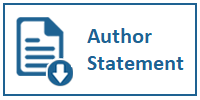Data Modeling for Big Data
DOI:
https://doi.org/10.31937/si.v6i1.273Abstract
Today the rapid growth of the internet and the massive usage of the data have led to the increasing CPU requirement, velocity for recalling data, a schema for more complex data structure management, the reliability and the integrity of the available data. This kind of data is called as Large-scale Data or Big Data. Big Data demands high volume, high velocity, high veracity and high variety. Big Data has to deal with two key issues, the growing size of the datasets and the increasing of data complexity. To overcome these issues, today researches are devoted to kind of database management system that can be optimally used for big data management. There are two kinds of database management system, relational database management system and nonrelational system that can be optimally used for big data management. There are two kinds of database management, Relational Database Management and Non-relational Database Management. This paper will give reviews about these two database management system, including description, vantage, structure and the application of each DBMS.
Index Terms - Big Data, DBMS, Large-scale Data, Non-relational Database, Relational Database.
Downloads
Downloads
Published
How to Cite
Issue
Section
License
Authors retain copyright and grant the journal right of first publication with the work simultaneously licensed under a Creative Commons Attribution-ShareAlike International License (CC-BY-SA 4.0) that allows others to share the work with an acknowledgement of the work's authorship and initial publication in this journal.
Authors are able to enter into separate, additional contractual arrangements for the non-exclusive distribution of the journal's published version of the work (e.g., post it to an institutional repository or publish it in a book), with an acknowledgement of its initial publication in this journal.
Copyright without Restrictions
The journal allows the author(s) to hold the copyright without restrictions and will retain publishing rights without restrictions.
The submitted papers are assumed to contain no proprietary material unprotected by patent or patent application; responsibility for technical content and for protection of proprietary material rests solely with the author(s) and their organizations and is not the responsibility of the ULTIMA InfoSys or its Editorial Staff. The main (first/corresponding) author is responsible for ensuring that the article has been seen and approved by all the other authors. It is the responsibility of the author to obtain all necessary copyright release permissions for the use of any copyrighted materials in the manuscript prior to the submission.














